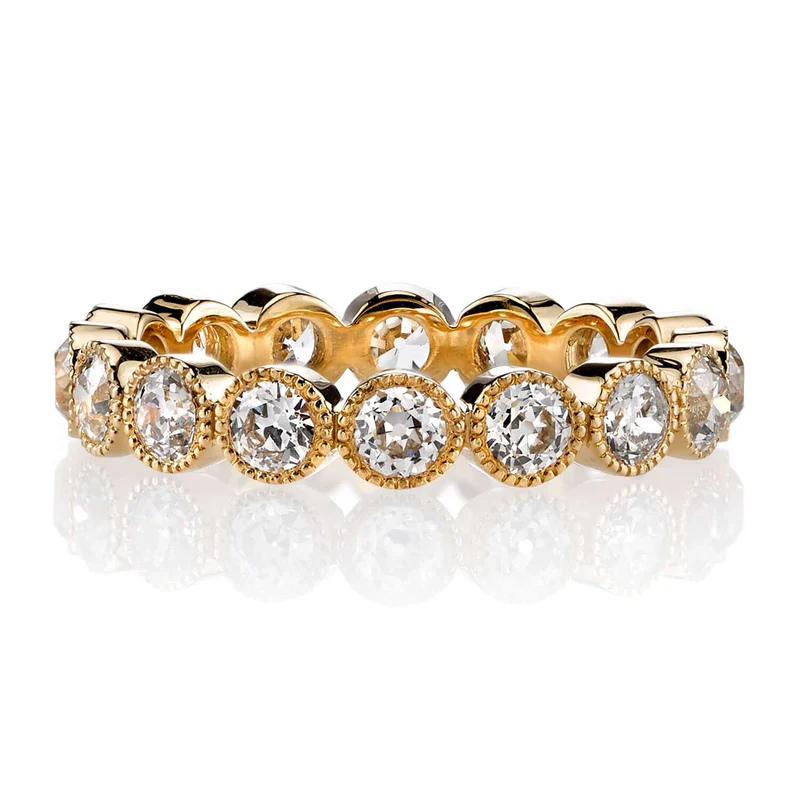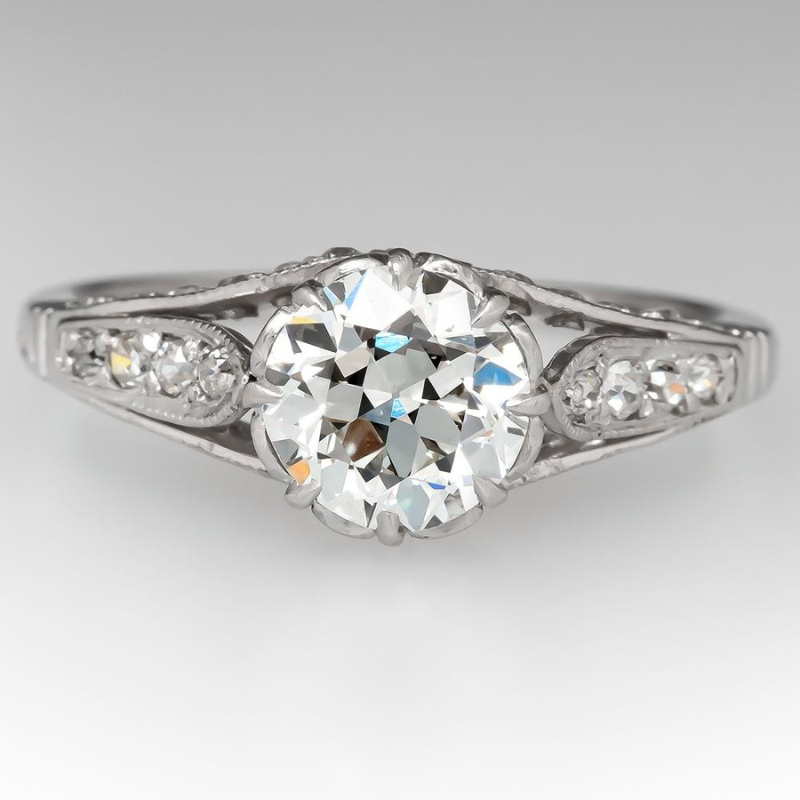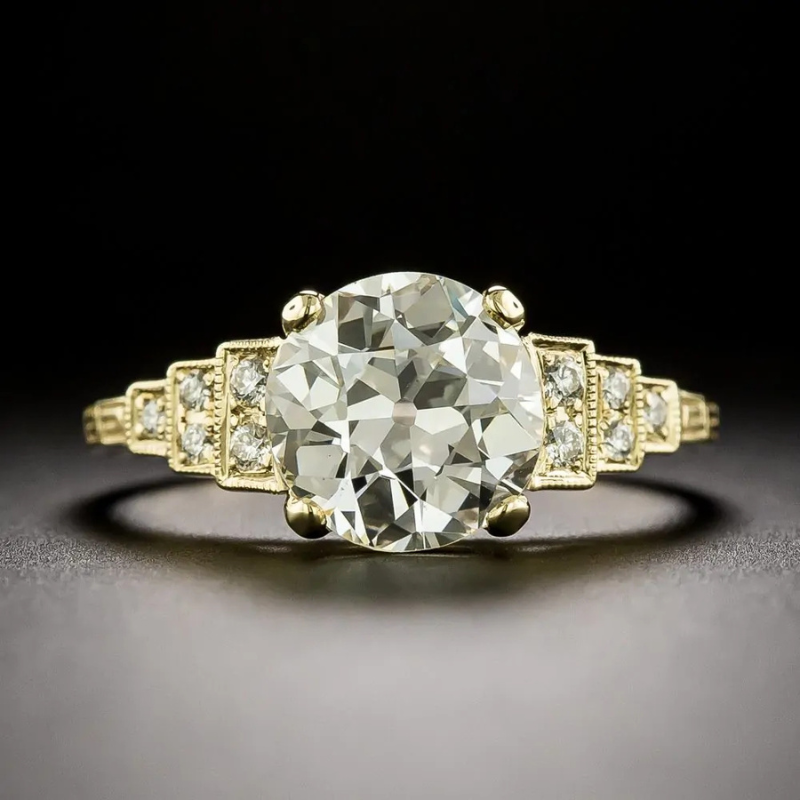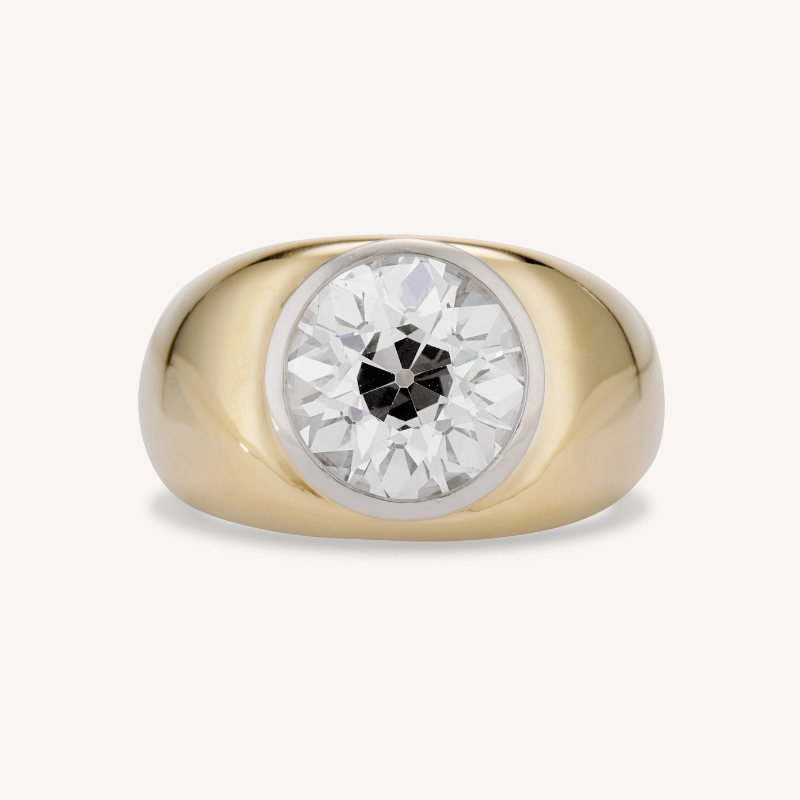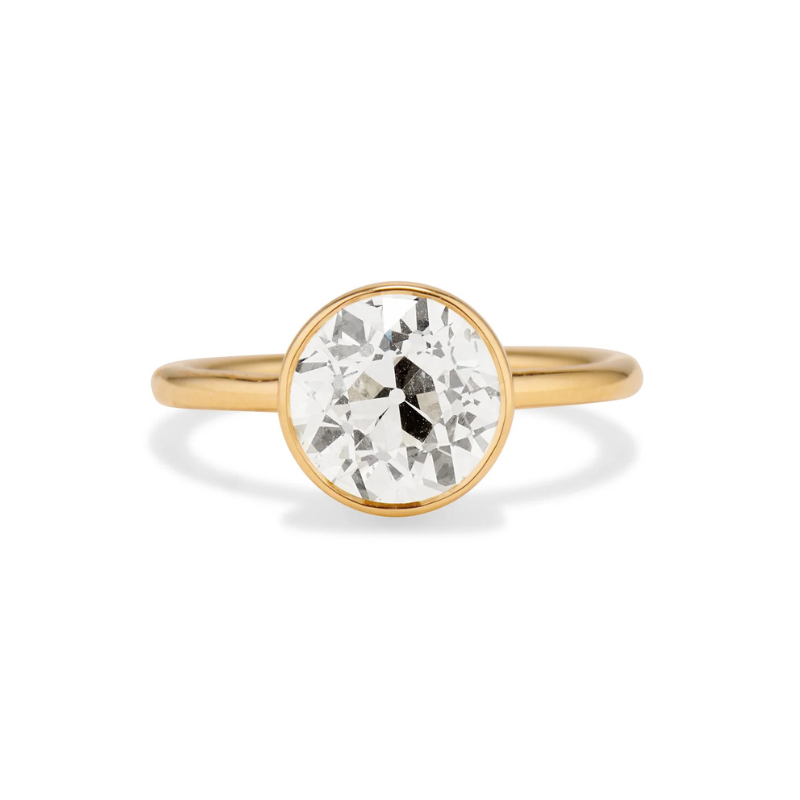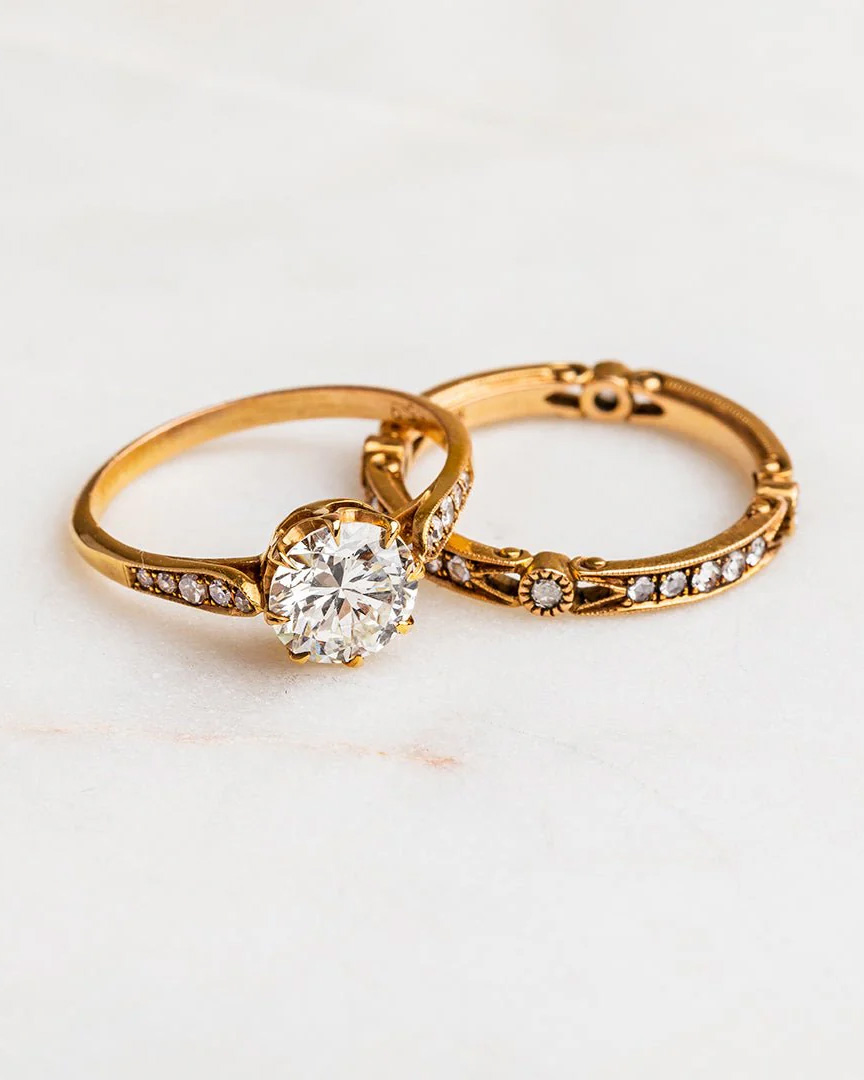Why Collectors Love Old European Cut Diamonds
From their 19th-century origins to their renewed demand in modern jewelry, Old European cut diamonds prove that “perfectly imperfect” never goes out of style.
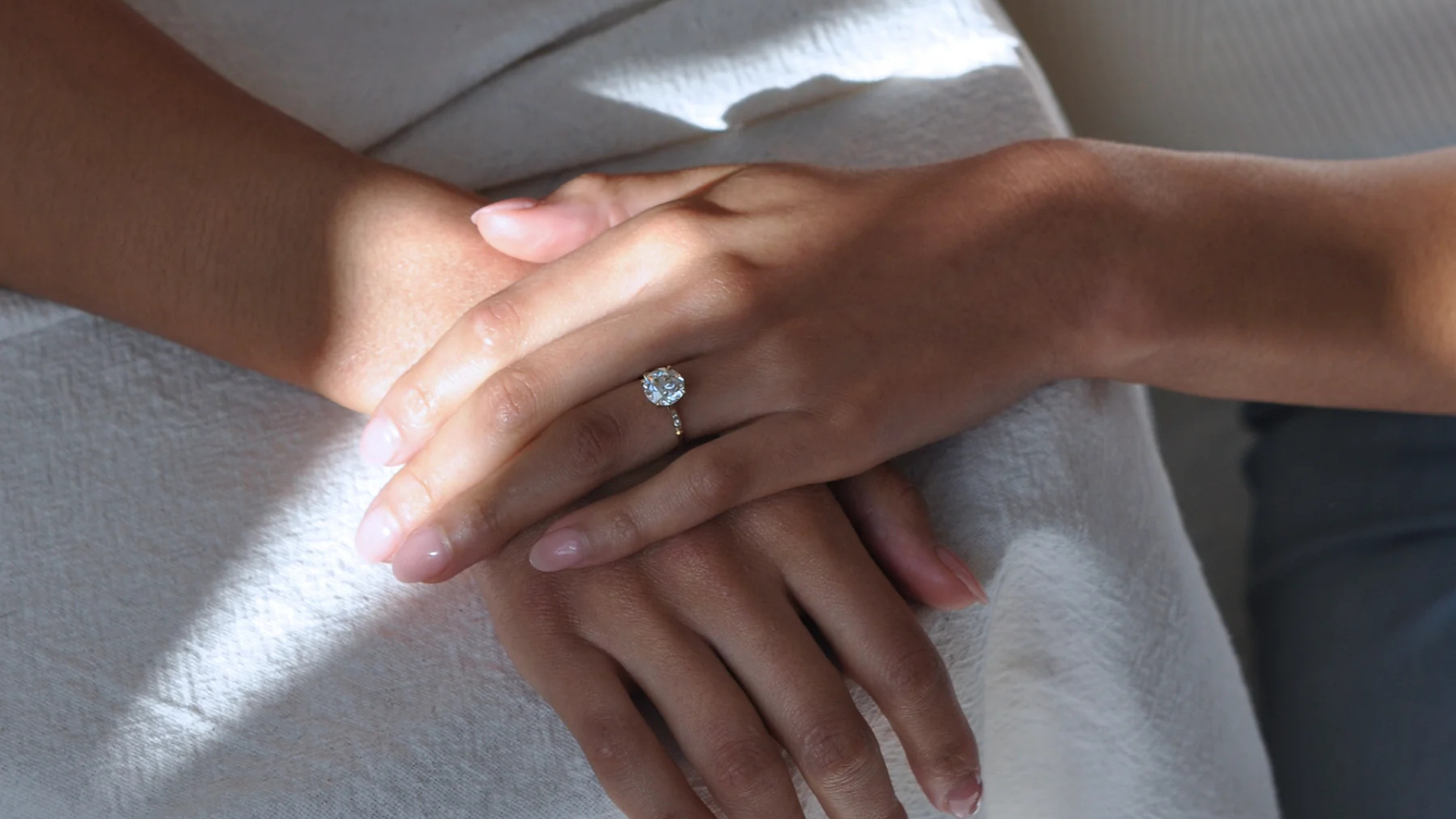
Ashley Zhang Old Euro Cut Diamond Engagement Ring
When we think of diamonds, most people picture the modern round brilliant cut with its precise symmetry and dazzling sparkle. But before the technology existed to cut diamonds with near mathematical perfection, there were the antique cuts—diamonds crafted entirely by hand and eye. Among these, the Old European cut diamond stands out as one of the most romantic and storied shapes in jewelry history. Today, it’s enjoying a renaissance among collectors and couples who crave individuality and heritage in their diamonds.
Meet the Expert

- Grant Mobley is the Jewelry & Watch Editor of Only Natural Diamonds.
- He is a GIA Diamonds Graduate.
- He has over 17 years of jewelry industry experience, starting with growing up in his family’s retail jewelry stores.
From Old Mine to Old European: The Evolution
The Old European cut was born out of innovation in the late 1800s, a natural progression from the earlier Old Mine cut. Old Mine cuts dominated the Georgian and Victorian eras (1700s–1800s). These stones are easy to recognize: they feature a squarish, cushion-like outline, an open culet (the flat facet at the bottom of the diamond), and often an unpolished girdle that reflects the natural octahedral crystal of the diamond rough.
Then came a breakthrough: the bruting machine. This invention allowed cutters to grind diamonds into rounder shapes, paving the way for the Old European cut. Suddenly, cutters could fashion diamonds with a more circular outline. While still imperfect by today’s standards, these stones represented the cutting edge of their time. They became especially popular during the Victorian, Edwardian, and Art Deco eras, when craftsmanship met glamour in unforgettable ways.
Perfectly Imperfect: The Unique Beauty of the Old European Cut Diamond

What sets Old European cut diamonds apart is their distinctive play of light. Unlike modern brilliant cuts that produce a uniform, disco-ball sparkle, old Europeans create broader flashes of light or “pops” of brilliance. Cutters designed their wide, geometric facets to dazzle under candlelight and gas lamps, giving them a uniquely romantic glow.
Every Old European cut diamond was hand-shaped, with cutters making instinctive decisions about how best to bring out the gem’s natural character. No two are alike. That individuality, the slight asymmetry, the deeper pavilion, the higher crown, is precisely what gives these diamonds their charm. They’re not trying to be perfect; they’re telling a story of a time when artistry trumped standardized brilliance.
Technical Traits of Old European Cut Diamonds: What to Look For
If you’re examining an Old European cut diamond, here are a few key features you’ll notice:
- Round shape: Thanks to the bruting machine, but still slightly irregular since cutting was done by eye.
- High crown and small table: These proportions create more fire (rainbow light dispersion) than modern diamonds.
- Open culet: Visible through the table as a small circle in the center, both functional (preventing chips) and aesthetic.
- Deeper pavilion: Gives more fire but also leads to some light leakage, meaning these diamonds look softer and less “white” than today’s round brilliants.
This mix of qualities gives Old Europeans their signature warm, romantic glow that is different from the crisp brightness of a modern cut.
Why Old European Cut Diamonds Are Harder to Find—and More Coveted

Because Old European cuts were hand-cut in the 1800s and early 1900s, every authentic example is an antique. That means supply is finite. As demand for these charming, one-of-a-kind stones has surged in recent years, prices have followed. More and more people are moving away from the standardized perfection of modern cuts in favor of the individuality and romance of antique cut natural diamonds.
But with rarity comes a challenge: finding a true Old European cut requires patience and often the help of a knowledgeable jeweler. Today’s market also includes modern diamonds cut in the old European style. These can be beautiful and may offer a similar look, but it’s essential to understand whether you’re buying an antique or a newly cut interpretation.
Of course, Old European cut diamonds are not for everyone. If you love the crisp brilliance and symmetry of modern round brilliants, you might find the softer glow and quirks of antique cuts less appealing. But for many, that’s precisely the point. These diamonds don’t follow modern grading standards. They often earn “poor” cut grades on laboratory reports, but they embody history, craftsmanship, and individuality in ways a machine-cut stone simply can’t.
Think of them as the diamond equivalent of vintage wine: imperfect by modern standards, but layered with character and nuance.
The Revival of Old European Cut Diamonds and Antique Charm
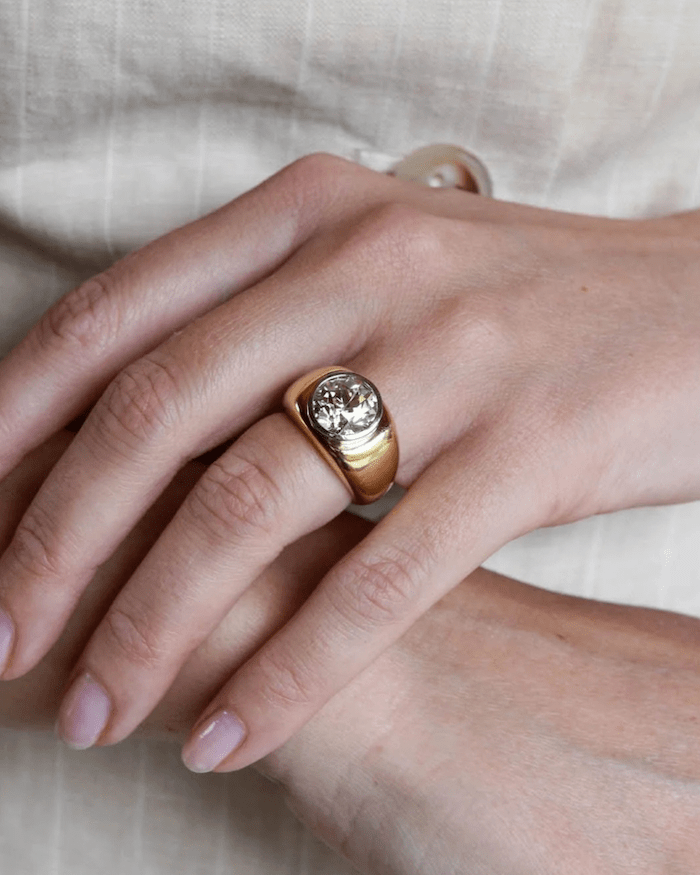
We’re living in an era when individuality is valued more than ever, and that’s why Old European cut diamonds are having a moment. They connect us to the romance of history, to the glow of candlelit evenings, and to the artistry of diamond cutters who relied on instinct and vision rather than machines. Each one is a reminder that diamonds are not just commodities; they’re treasures of nature shaped by human hands across centuries.
For couples seeking something truly personal, the Old European cut offers exactly that. These antique jewels will never be duplicated, and they embody both beauty and a lasting legacy. For collectors, they represent a chapter of diamond history that bridges the gap between the earliest cuts and the dazzling brilliants of today.
The Extraordinary Nature of the Old European Cut Diamond
Old European cut diamonds may not meet the standardized beauty ideals we apply to diamonds today, but that’s what makes them extraordinary. They are hand-cut, storied, and scarce—qualities that make them increasingly desirable in a world flooded with mass-produced ‘perfection’. Whether you fall for their candlelit glow, their imperfect symmetry, or their historic charm, one thing is sure: Old European cut diamonds are more than just gemstones; they’re a glimpse into the soul of jewelry history.
